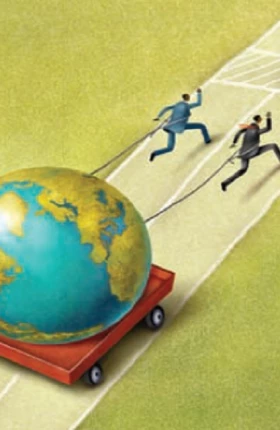In our discussions with the CEOs and other senior executives of industry-leading companies around the world, there has been little surprise that a new wave of global challengers has emerged onto the world stage. What has been a surprise—and often a shock—is that they have achieved leadership so quickly in so many industries. In just two years, from 2006 to 2008, the number of companies based in Brazil, China, India, and Russia on the FT Global 500 list more than quadrupled, from 15 to 62. And, like those high achievers, many other companies based in rapidly developing economies (RDEs) have set their sights on global markets.
The tremendous diversity of industries represented, business models deployed, and strategies adopted by the global challengers makes it difficult to generalize about these companies. However, most challengers exhibit several core characteristics that have played a key role in their development into contenders for global leadership. These characteristics include their favorable starting positions in RDEs―which gave them early privileged access to high-growth markets, natural resources, and low-cost talent pools, as well as freedom from the burdens of costly and aging legacy assets typical of companies in high-cost, low-growth economies. The challengers’ ability to reach an initial position of strength in their home markets has provided a solid platform for growth.
A second shared characteristic of most challengers is the vision and will of their ambitious owners and founders, who have taken enormous risk in pursuit of global leadership. A third characteristic is the ability to reach outside their home markets, to learn fast, and to adapt their business models as needed. In the process, many choose international mergers and acquisitions (M&A) as a quick path to developing globally competitive businesses.
To better understand these companies as a group, we have selected a sample of 100 global challengers for the 2009 BCG 100 New Global Challengers list. These companies represent a diverse group from many regions and industry sectors. We interviewed many of their CEOs and other senior executives to get an inside perspective on their international expansion strategies, future directions, and current challenges. This perspective, augmented by additional research, has shaped our view into how challengers are growing and changing in response to the current turbulent times in the global economy.
The process by which RDE-based companies are attaining scale and moving into global markets is just beginning. But the competition between global challengers and industry incumbents is already heating up. There will be winners and losers in both camps, particularly in view of the current economic instability, volatile prices, fluctuating exchange rates, and keen competition for customers, suppliers, raw materials, talent, and brand recognition. Those challenger companies that adapt fastest to these tough times will find themselves in an advantaged position as they continue on the path to leadership. Some will end up being defeated by the powerful incumbents that dominate their industries—or displaced by new challengers that are just setting out on their journey to become global companies. Others will be unable to surmount the tremendous risks of rapid global expansion or to repay the debt incurred in financing their aggressive growth. The incumbents, for their part, must be vigilant about the competitive threat that the global challengers pose to their businesses and must continually seek new sources of advantage to sustain and enhance their leadership positions.











